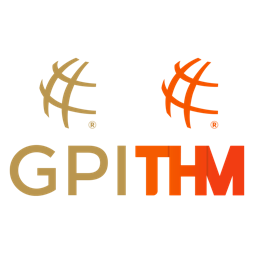February 05 2016, by Alexandre Dreyfus
BLOG: What’s in a name anyway? The making of HoldemX™
Poker but not poker, but based off of poker.
“How can we fit dragons and explosions into poker? We need something new.” I almost quit on the spot. We’d thrown the idea of making a “new” Hold’em game around at the GPI office since mid 2014 but for much of the next year it was one of those projects that didn’t past the “wouldn’t a more ‘video gamey’ version of poker be cool?” phase of development. We were busy planning Awards shows & figuring out how to launch & execute the Global Poker Masters (now the GPI World Cup) – we didn’t have the extra hands on deck to goof around with how to reinvent the wheel, and then strap rockets to it.
In mid April of 2015 that changed – roped into a morning meeting about constructing a Global Poker League (GPL) (plug: it’s happening and the GPL Draft is on Feb. 25th in LA), Alex Dreyfus was batting around USPs for said League. Something that could get us noticed by the esports community, and something that was new. Maybe it would get sponsors excited, or get the millions strong ‘don’t care about poker anymore’ community of disengaged poker fans interested again.
We didn’t nail down any ideas right then, but the next day he tells me, “It’s called HoldemX”. I ask what that is. Neither one of us knew. The name sounded cool though, so we weren’t at zero. We also convinced ourselves that it was going to be awesome and exactly what the GPL needed. Now we just needed to figure out what ‘it’ was.
Maybe a second deck?
Other than knowing that HoldemX should resemble a turn based strategy game more than a Hold’em SNG we didn’t have much to work with until the idea for a second deck was brought up. It’s simple and far from revolutionary thinking – how do you really ‘change’ the dynamics of a normal poker game? Bring in a second deck that has the power to screw up the first one when dealt. Why not?
When the fundamental structure of a game – in this case No Limit Hold’em – already exists there’s not that many variables left to change while keeping basic rule integrity the same. Then it just becomes a matter of augmentation – how can we let players change their hole cards? How can they manipulate the board? What about bet sizing and etc.?
These seem like vague, wide open questions at first but luckily we didn’t lose sight of the fact that our core demographic would be poker players – and poker players had already answered a lot of these questions. The more I thought about what players “wanted” the more I remembered dozens upon dozens of bad beat stories that had eerie similarities:
“any diamond, jack or ten – and I’m chipleader…”, “got it all in good then the flop from hell hits while we’re three handed…”, “so I value bet and this a#$%*&@ has literally the only hand in his range that beats me.” – if you listen to enough poker players you’ll actually hear them utter phrases like “if only that 9 was a 10…” once in awhile. So the follow-up question seemed simple – what if you could make that happen? what if you could re-deal a flop, or turn that 9 into a 10?
By the time May 2015 rolled around we had put together enough cards to answer these questions to make up a basic deck (we called it an xDeck – filled with xCards – to make sure we never strayed too far from that whole “the letter ‘X’ is cool” motif), split into 3 categories – cards that changed player’s’ hole cards, cards that changed the board, and cards that affected action.
So we have a deck – now what? Time to try everything.
We knew what we wanted to change about the game – we literally had a deck full of ideas. The problem was, we didn’t know what the right way for these cards to interact with the game was. Maybe a gem system and each player gets a few random xCards per hand, or maybe all the xCards are free to use but you only get one, or maybe something else entirely. There was only one way to figure this out – play a bunch of different game types until everyone at the table agrees that one of them doesn’t suck (note: the actual process was a bit more meticulous and nuanced than that sentence implies).
The good thing is that GPI is a poker company, filled with poker nerds. Everyone’s idea of a good time in the middle of a Mediterranean summer – the first HoldemX “test” was on June 11th, 2015 – was to play poker during work. I spent all of 30 minutes making a 3rd grader’s rendition of our 15 xCards, printed them out and BOOM, ten papercuts later we had our first real xDeck ready to test. Over the next 2 months – and countless winner take all sit-n-gos later – the current version of the game took shape, with everyone in agreement that Heads Up was the way to go – multi-way pots in the game were a blast to play, but the logistics of doing so live, with board cards changing over and over again proving to be a messy experience. We even took the time to print out a cooler version of the deck to test – because we’re nerds.
This led us into our next epiphany – until someone figured out how to make real cards magically transform suits and values – HoldemX would be a much smoother experience played online. We also decided to stop giving out xCards randomly and instead have players choose which ones they played with and which ones their opponents couldn’t use. This gave rise of the current ban/ draft system – if you want to be strategic about strategic cards, it makes no sense to only have randomized access to them. After a few basic game theory based tweaks to give xCards fair relative values in relation to one another and sensible ban/ draft budgets to ensure players couldn’t just pick up the ‘cream of the crop’ cards each time – we were ready-ish enough to move forward.
Time to throw an ‘X’ into the GPL online development process.
By late June/ early July of 2015 GPI – fresh off of securing $4.9 Million in Series A funding from a variety of private investors and VC firms – we’d set about searching for developers to create GPL’s online competition platform. CEO Dreyfus found the match we were looking for during a visit to Stockholm and, with our new Swedish Developer friends in tow, we’d delved right into turning the idea of an ‘online arena’ geared to optimize the fan experience of watching poker into a reality.
By September 10th, 2015 we’d (mostly) ironed out HoldemX’s game logic & all the basic elements to have a fully working title. When it came time to develop it made sense to have our new Swedish contingent build-up a digital alpha version of HoldemX – after all if we were going to integrate the game into the GPL, using the same development team for both projects seemed like hitting two birds with one stone. After assuring them we weren’t kidding (twice) we jumped right in. By the time Dreyfus unveiled the GPL / HoldemX roadplan for industry insiders during an October 2015 meeting in London the skeleton of HoldemX’s online platform had already taken shape.
Just launch the damn thing.
From then on it was a matter of testing, catching bugs, adding features, subtracting features, playing with stacks and game clock times – basically throwing everything into and out of the game to see what worked – until we finally decided to show it off to some top players. We tested with them, listened to criticisms & explained ourselves every time a “wait, what?” or “this is insane” popped up. Once we were confident we’d confused enough of poker experts (in a good way, we think…) it seemed only right to open the testing up to the greater poker and gaming community.
This week (Feb. 2nd 2016 to be exact) we launched the HoldemX Alpha Version – it’s rough around the edges, and we can’t wait for you to give it a spin. We want to make this experience as awesome as we knew it would be once we thought of the name.
Social links: Alex Dreyfus on Twitter | Alex Dreyfus on Linkedin | Alex Dreyfus Blog | Facebook Alex Dreyfus
Related articles
About the author



